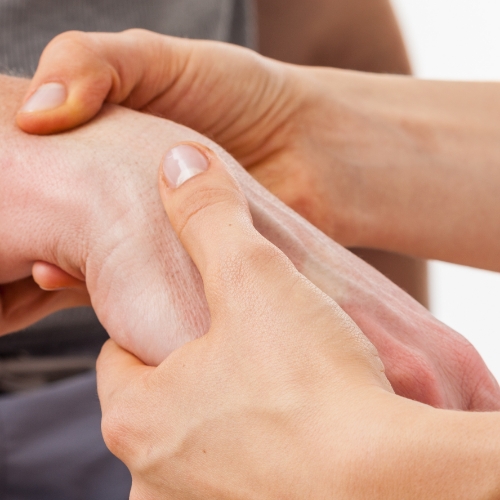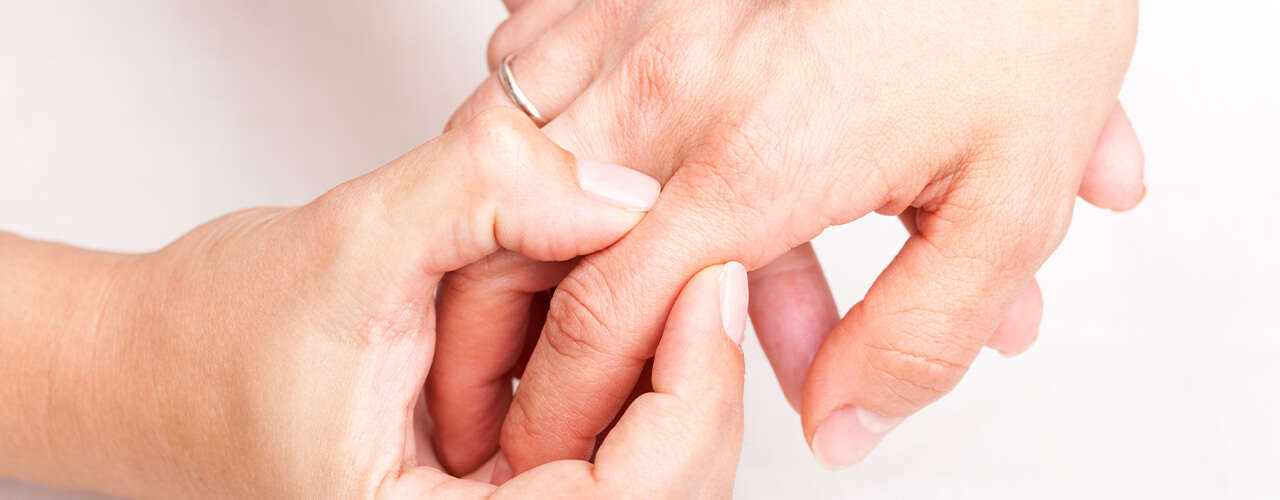
Hand therapy focuses on treating orthopedic upper-extremity issues to optimize the functional use of the arm and hand. It is used to treat several conditions surrounding the upper extremities, including but not limited to:
- Amputations
- Lacerations
- Carpal tunnel syndrome
- Tendonitis
- Arthritis
- Fractures
- Sprains/strains
In general, hand therapy focuses on the biomechanical issues of upper-extremity conditions. It’s a patient-centered approach that addresses the needs of the patient, such as being able to lift objects, open a jar, or button a shirt.
There are several interventions that a hand therapist can make, in order to help you comfortably perform daily functions.
This may include any combination of therapeutic exercises, mirror therapy, orthosis design, pain management, manual therapy, taping, ergonomics, or compression therapy.
There are several activities that a hand therapist may have you perform in order to strengthen your upper extremity after an injury, such as working with putty, using a gripper, or using dumbbells.
There are several benefits to hand therapy, including:
- Conditioning prior to returning to work
- Sensory re-education after nerve injury
- Desensitization following nerve injury or trauma
- Preventative, non-operative or conservative treatment
- Training in the performance of daily life skills through adapted methods and equipment
- Design and implementation of home exercise programs to increase motion, dexterity, and/or strength
- Management of acute or chronic pain
Physical therapy vs. occupational therapy – what’s the difference?
While occupational therapy is similar to physical therapy, there are a few distinct differences. Physical therapy focuses on the patient’s ability to perform certain movements overall, while occupational therapy focuses on the patient’s ability to perform certain movements during daily activities.
For example, a physical therapist will work with a stroke patient to build back muscle strength, while an occupational therapist will work with a stroke patient to practice basic skills like walking, eating, bathing, and dressing.
Physical therapy and occupational therapy tend to overlap, as a patient may begin treatments with a physical therapist and then move on to working with an occupational therapist once their pain is relieved and they have regained enough strength/physical function.
Find relief and get back to your normal life today!
If you believe you could benefit from hand therapy, don’t hesitate to request an appointment today. You feel better emotionally when you can comfortably engage in your hobbies and everyday activities. Hands On Physical Therapy is ready to get you started on the path toward living a more enjoyable, comfortable and functional life!
Your Next Steps…
Request An Appointment
Receive A Custom Treatment Plan
Work Hard and Progress In Your Recovery
Recover and Enjoy Life Pain-Free!

